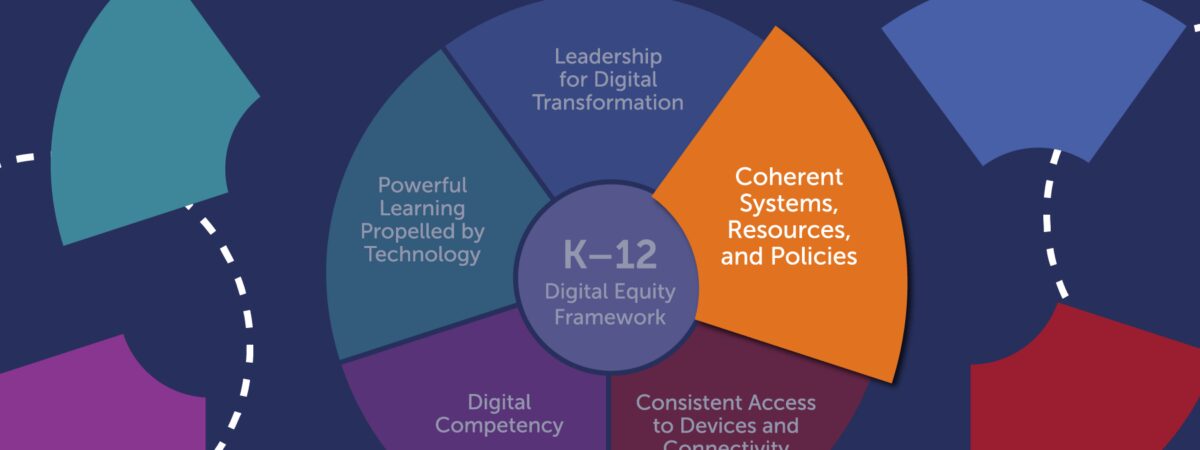
The Coherent Systems, Resources, and Policies domain of Digital Promise’s Digital Equity Framework allows for leaders to align systems, resources, and polices to a strategic technology integration plan. When there is a strategic plan in place, it creates the conditions for ensuring funding to support technology and learning. When learners have continued access to technology and are provided with powerful learning experiences, technology integration can catapult learning to the next level.
One of the most powerful ways to understand the impact of coherent systems is to see them in action. Across the country, districts are on a unique journey to create the infrastructure that supports meaningful, sustainable technology integration. One district’s experience stands out as a testament to what’s possible when vision, strategy, and systems come together to support digital equity.
Below, Tia Jones, instructional technology specialist lead coach for Wichita Public Schools, and Katelyn Schoenhofer, the artificial intelligence specialist for the district—both former Verizon Innovative Learning Schools coaches—share how their district achieved success in this domain.
When Wichita Public Schools joined Verizon Innovative Learning Schools in 2021, we were already laying the groundwork to integrate technology into instruction. Our district had systems in place for technology, but we knew that achieving true digital equity required more than just access to devices—it required a strategic approach to aligning technology with teaching and learning.
With the help of Digital Promise and their Digital Equity Framework, we began fine-tuning our best practices, shifting from school-by-school decision-making to a more cohesive, district-wide strategy. We started by listening to each building, recognizing that different schools had different needs when it came to device management, roll-in and roll-out processes, and professional development structures. By collecting and analyzing this data, we could identify trends and best practices to build a resource bank of support, ensuring that all schools had access to the knowledge and tools they needed to succeed.
This work has been instrumental in creating coherence across our district, especially in the face of leadership transitions and shifting job responsibilities. Instead of starting from scratch when changes occur, we now have well-documented, research-backed systems that provide clarity and continuity. Our professional development and technology support systems are designed with sustainability in mind, and our practices have evolved to support consistency without sacrificing flexibility. Most importantly, our technology systems are no longer just about logistics—they are about learning.
Because of this intentional alignment, students and teachers experience technology as a seamless, supportive element of instruction rather than a separate initiative.
The James Clear quote that opened this blog post deeply resonates as we continue on our digital equity journey: “Goals are good for setting a direction, but systems are best for making progress.” That mindset has driven our work, ensuring that no matter who steps into a leadership role, the foundation remains strong.
Our Wichita Public Schools Technology Vision isn’t just a statement—it’s embedded in the way we operate.Through intentional alignment, shared leadership, and a commitment to continuous improvement, we have built a system where digital equity is more than a goal—it’s a reality that will continue to shape learning experiences for years to come.
Want to learn more about the other domains of the Digital Equity Framework? Read our blog posts about Leadership for Digital Transformation, Consistent Access to Devices and Connectivity, and Digital Competency to gain a more comprehensive understanding of what it takes to achieve digital equity for all learners.